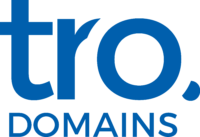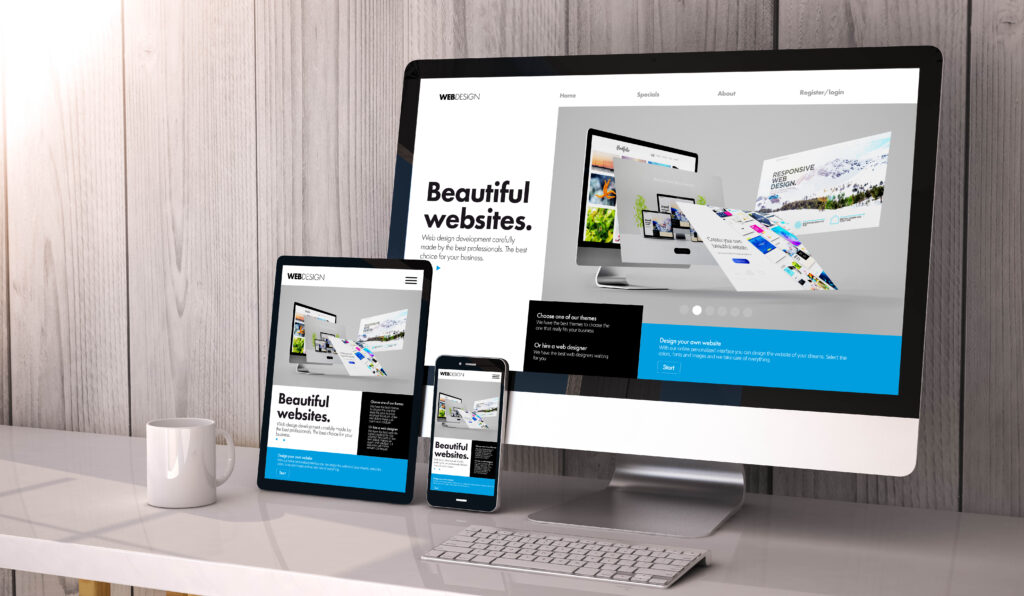Introduction to Digital Presence
In today’s rapidly evolving digital landscape, having a strong online presence is essential for business success. As consumers increasingly turn to the internet to find products and services, businesses must adapt to meet these demands. A website serves as a vital tool in this transformation, acting as a central hub for your online activities and allowing you to showcase your offerings to a wider audience.
By creating an effective website, you ensure that your business can be discovered by potential customers who are searching online. In an age where information is just a click away, not having a website puts you at a significant disadvantage compared to competitors who have already established their digital presence. A website not only helps you reach new customers but also provides a platform for existing customers to learn more about your offerings, leading to increased customer retention and loyalty.
Moreover, a well-designed website can serve multiple functions, from acting as an online storefront to providing customer service and gathering valuable data on consumer behaviour. These functionalities can streamline your operations and make your business more efficient. For instance, integrating an e-commerce platform into your website allows you to sell products directly to consumers, bypassing traditional retail limitations and expanding your market reach.
Additionally, your website serves as an extension of your brand. The design, content, and user experience should all align with your brand identity, creating a cohesive and professional image. This consistency helps build brand recognition and trust among your audience. By presenting a polished and reliable online presence, you can attract more customers and encourage them to engage with your business.
Another key benefit of having a website is the ability to leverage digital marketing strategies effectively. Search engine optimisation (SEO) techniques can be applied to your website to improve its visibility in search engine results. This increases the likelihood of attracting organic traffic from potential customers who are actively looking for products or services like yours. Social media integration can further amplify your reach by driving traffic from various platforms to your website.
Furthermore, having a website allows you to collect and analyse data on user interactions. Tools such as Google Analytics provide insights into how visitors navigate your site, which pages are most popular, and where your traffic is coming from. This information is invaluable for making informed decisions about your marketing strategies and improving your website’s performance.
Increasing Business Exposure
One of the primary advantages of having a website is the increased exposure it provides. A well-designed website for business can significantly extend your reach beyond local boundaries, tapping into national and even global markets. Statistics show that roughly 23% of searches are for local businesses, as noted by Milestone Research. This highlights the importance of appearing in search results to attract potential customers.
Numerous businesses have experienced substantial growth after moving online. For instance, many small retailers have expanded their customer base significantly by launching an e-commerce platform. These examples underline how websites promote business growth by opening new avenues for sales and marketing.
In addition to reaching a wider audience, a website allows for more targeted exposure. By utilising search engine optimisation (SEO) techniques, businesses can improve their visibility on search engines. This ensures that your website appears in front of users who are actively searching for products or services that you offer. Such targeted exposure can lead to higher conversion rates, as you are attracting visitors who are already interested in what you provide.
Websites also offer the benefit of being accessible around the clock. Unlike a physical store with set operating hours, a website is available 24/7. This constant availability means that potential customers can visit your site and learn about your offerings at any time, increasing the likelihood of generating leads and sales. This is particularly advantageous for businesses looking to reach international markets, where time zone differences could otherwise pose a barrier.
The incorporation of social media links on your website can further boost your exposure. By encouraging visitors to share your content on platforms such as Facebook, Twitter, and LinkedIn, you can tap into new audiences and drive more traffic to your site. Social media integration also allows for real-time engagement with your audience, fostering a sense of community and loyalty among your customers.
Another crucial aspect of increasing business exposure through a website is the ability to run online advertising campaigns. Platforms like Google Ads and Facebook Ads allow for precise targeting based on demographics, interests, and behaviours. This level of targeting can result in more efficient use of your marketing budget and higher returns on investment. According to data, $53.52, according to WordStream., highlighting the need for targeted strategies to maximise return on investment.
Additionally, content marketing strategies such as blogging, video content, and downloadable resources can drive organic traffic to your site. Providing valuable and relevant content not only attracts visitors but also establishes your business as an authority in your industry. This can lead to increased trust and credibility, further enhancing your exposure and reputation.
Email marketing is another effective tool that can be leveraged through your website. By collecting email addresses via sign-up forms and offering newsletters or special promotions, you can keep your audience informed and engaged. This ongoing communication helps maintain interest in your brand and can lead to repeat business and referrals.
Establishing Credibility and Trust
In the current business environment, establishing credibility and trust with your audience is paramount. A professional website plays a crucial role in achieving this by serving as a reliable source of information about your business. The design and content of your site should reflect your brand’s values and mission, providing visitors with a clear understanding of what you offer and how you stand out from competitors.
First impressions are often lasting, and for many potential customers, your website will be their first encounter with your business. A well-designed, user-friendly site can leave a positive impression, signalling professionalism and attention to detail. Elements such as intuitive navigation, high-quality visuals, and coherent content structure all contribute to creating a trustworthy online presence.
Including customer testimonials and reviews on your website can significantly enhance its credibility. Positive feedback from satisfied customers acts as social proof, which can influence the decisions of new visitors. Highlighting real-life success stories and case studies can further substantiate your claims and demonstrate the value of your products or services.
Security is another critical aspect of building trust. Ensuring that your website is secure with HTTPS and displaying security badges can reassure visitors that their data is safe. This is particularly important for e-commerce sites where customers need to provide personal and payment information. A secure website reduces the risk of data breaches and builds confidence among users.
Transparency is also key to fostering trust. Providing clear contact information, such as phone numbers, email addresses, and physical location details, can make your business seem more accessible and reliable. An ‘About Us’ page that shares your company’s history, values, and team members can humanise your brand and create a more personal connection with visitors.
Additionally, a comprehensive FAQ section can address common questions and concerns, demonstrating that you understand and are prepared to meet the needs of your customers. This proactive approach not only enhances user experience but also shows that you value customer satisfaction.
Consistency across all online platforms is vital. Ensure that the information on your website matches what is presented on your social media profiles and other digital channels. This alignment builds a cohesive brand image, making it easier for customers to recognise and trust your business.
Regularly updating your website with fresh content can also signal to visitors that your business is active and engaged. This could include blog posts, news updates, or product launches. Staying current and relevant demonstrates your commitment to providing valuable information and keeping up with industry trends.
Finally, offering excellent customer support through your website can greatly impact your credibility. Features like live chat, email support, and detailed contact forms provide multiple avenues for customers to reach out with queries or issues. Prompt and helpful responses can turn a positive interaction into lasting loyalty, further solidifying the trust between your business and its audience.
Enabling Customer Interaction
A website provides an ideal platform for engaging with your customers. By incorporating features such as contact forms, live chat, and FAQs, you offer visitors multiple ways to interact with your business.
In 2023, mobile devices accounted for 313% more website visits than desktops, as highlighted by Semrush. This trend underscores the importance of optimising your website for mobile users to facilitate seamless interaction. Furthermore, with smartphones contributing to 77% of retail site traffic globally, according to Statista, they generate two-thirds of online shopping orders.
Providing customer support through your website enhances user experience and demonstrates your dedication to customer care. By promptly addressing queries and issues, you build loyalty and encourage repeat business.
Engagement tools such as newsletters, blogs, and social media links can keep your audience informed and involved. By offering valuable content, you not only attract visitors but also encourage them to return, thereby increasing customer retention. Blogs, for instance, can provide insights into industry trends, offer solutions to common problems, and highlight new products or services. This type of content fosters a sense of community and keeps your audience engaged.
User-generated content, such as reviews and testimonials, can also play a pivotal role in customer interaction. Positive feedback from satisfied customers acts as social proof, which can influence the decisions of new visitors. Highlighting real-life success stories and case studies further substantiates your claims and demonstrates the value of your products or services. This interactive aspect allows customers to feel involved and valued, thereby strengthening their connection to your business.
Interactive elements such as polls, quizzes, and surveys can make your website more engaging and provide valuable insights into customer preferences and behaviours. These tools not only make the user experience more enjoyable but also provide you with data that can inform your marketing and product development strategies. Understanding what your customers want and how they interact with your site allows you to tailor your offerings to better meet their needs.
Moreover, social media integration enables real-time engagement with your audience. By linking your website to your social media profiles, you can encourage visitors to share your content and interact with your brand across multiple platforms. This not only drives more traffic to your website but also fosters a sense of community and loyalty among your customers.
Personalisation is another key aspect of customer interaction. By using data analytics, you can tailor the user experience to individual preferences, making each visit to your website more relevant and engaging. Personalised recommendations, targeted offers, and customised content can significantly enhance user satisfaction and increase the likelihood of conversion.
Opportunities for Marketing and Expansion
Websites serve as powerful platforms for marketing campaigns, allowing businesses to promote their offerings through various channels. From SEO to social media integration, your website can be the foundation of a comprehensive digital marketing strategy.
The use of analytics tools further enhances your ability to track growth and make informed decisions. By analysing data on user behaviour and traffic patterns, you can refine your marketing efforts for better results. The average cost per lead in Google Ads in 2023 was $53.52, according to WordStream. This highlights the need for targeted strategies to maximise return on investment.
With search ad spending projected to reach $190.5 billion by 2024, according to Statista, the significance of websites in business expansion and visibility cannot be overstated.
A website offers an unparalleled opportunity for businesses to showcase their products or services to a broader audience. Leveraging digital marketing strategies such as pay-per-click advertising, content marketing, and social media campaigns, you can drive targeted traffic to your website and increase your chances of converting visitors into customers.
Moreover, your website can act as a hub for all your marketing activities. Whether it’s through blog posts, video content, or downloadable resources, you can create and distribute valuable content that attracts and engages your audience. This content not only helps in drawing visitors but also establishes your business as an authority in your industry.
Email marketing is another effective strategy that can be facilitated through your website. By collecting email addresses via sign-up forms and offering newsletters or special promotions, you can keep your audience informed and engaged. This ongoing communication helps maintain interest in your brand and can lead to repeat business and referrals.
The integration of social media links on your website can further amplify your marketing efforts. By encouraging visitors to share your content on platforms such as Facebook, Twitter, and LinkedIn, you can tap into new audiences and drive more traffic to your site. Social media integration also allows for real-time engagement with your audience, fostering a sense of community and loyalty among your customers.
Interactive elements such as polls, quizzes, and surveys can make your website more engaging and provide valuable insights into customer preferences and behaviours. These tools not only enhance the user experience but also provide you with data that can inform your marketing and product development strategies. Understanding what your customers want and how they interact with your site allows you to tailor your offerings to better meet their needs.
Overall, websites offer numerous opportunities for businesses to expand their reach and grow.
Cost Efficiency
When compared to traditional marketing methods, websites offer a cost-effective solution for promoting your business. While print and broadcast advertising can be expensive, maintaining a website allows for more affordable and targeted outreach.
Furthermore, the potential for long-term savings is considerable. By investing in a professional website, businesses can reduce ongoing marketing expenses and focus on strategies that yield higher conversion rates. For instance, the average conversion rate on Google Ads is 3.75% for search ads and 0.77% for display ads, according to WordStream. This suggests that a well-optimised website can significantly enhance your marketing efficiency.
Digital marketing tools integrated into your website, such as SEO, email marketing, and social media campaigns, are often more economical than traditional advertising channels. The costs associated with these digital strategies are usually lower, allowing you to reach a wider audience without a substantial financial outlay.
Additionally, a website enables you to automate various marketing processes, thereby reducing the need for extensive manpower. For example, automated email responses and customer service chatbots can handle routine inquiries, freeing up staff to focus on more complex tasks. This automation can lead to significant cost savings over time.
Unlike traditional advertising methods, which may require recurring costs for placements and airtime, a website represents a one-time investment in design and development, with ongoing maintenance costs that are relatively low. This makes it an attractive option for small and medium-sized enterprises (SMEs) looking to maximise their marketing budgets.
The flexibility of a website allows for continuous optimisation and updates, ensuring that your marketing strategies remain effective over time. As consumer behaviours and market trends evolve, your website can be easily adjusted to reflect these changes. This adaptability is far more challenging and costly to achieve with traditional marketing mediums.
Moreover, the analytical tools available for websites provide detailed insights into user behaviour and marketing performance. This data-driven approach allows you to identify what works and what doesn’t, enabling you to allocate your budget more efficiently. The ability to measure return on investment (ROI) in real time ensures that your marketing efforts are both effective and cost-efficient.
Incorporating content marketing into your website strategy can also prove to be a cost-effective way to attract and engage customers. Creating valuable content, such as blog posts, videos, and downloadable resources, requires a relatively small investment but can yield significant returns in terms of organic traffic and lead generation.
By leveraging these cost-effective digital marketing strategies, businesses can achieve substantial growth without incurring the high costs associated with traditional marketing channels.
Conclusion
To summarise, having a website is indispensable for businesses aiming to thrive in today’s digital environment. A well-crafted website serves multiple purposes, from boosting your brand’s visibility to fostering customer trust and engagement. It’s a versatile tool that can significantly enhance your marketing efforts, making it easier to reach and convert potential customers.
One of the primary benefits of a website is the increased reach it offers. By transcending geographical boundaries, your business can tap into national and even global markets, providing access to a broader audience. This expanded reach is particularly important as more consumers turn to online shopping and services, making a strong digital presence crucial for attracting and retaining customers.
A website also plays a pivotal role in establishing your business’s credibility. A professional, user-friendly site conveys trustworthiness and reliability, which are essential for building customer relationships. By including elements such as customer testimonials, detailed product information, and secure payment options, you can further enhance your site’s credibility and reassure visitors.
In terms of customer interaction, a website offers numerous features that facilitate engagement and communication. Tools like live chat, contact forms, and social media integration make it easy for customers to reach out with questions or feedback. This immediate interaction not only improves customer satisfaction but also helps you gather valuable insights into their preferences and behaviours.
From a marketing perspective, a website is a cornerstone of any comprehensive digital strategy. By leveraging SEO, content marketing, and social media campaigns, you can drive targeted traffic to your site, increasing the chances of conversion. Additionally, the data analytics tools available for websites allow you to track performance and make informed decisions, optimising your marketing efforts for better results.
Moreover, the cost efficiency of maintaining a website compared to traditional marketing methods cannot be overstated. Digital marketing strategies often require a smaller financial outlay, making them more accessible for small and medium-sized enterprises. The automation capabilities of a website, such as email responses and customer service chatbots, further contribute to cost savings, allowing you to allocate resources more effectively.
Finally, the adaptability of a website ensures that your business remains relevant in an ever-changing market. Regular updates and optimisations can keep your site aligned with consumer trends and technological advancements, ensuring sustained success. By embracing the digital transformation and investing in a robust online presence, you position your business for long-term growth and competitive advantage in the digital age.



